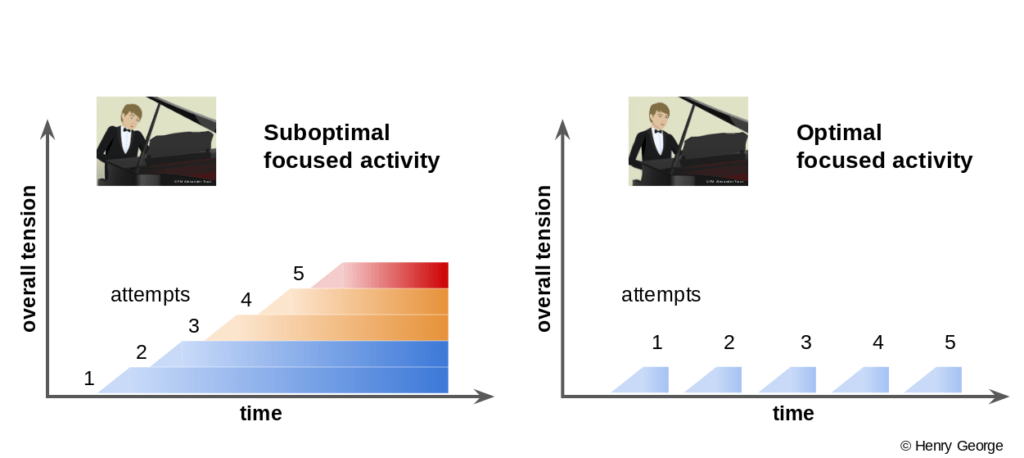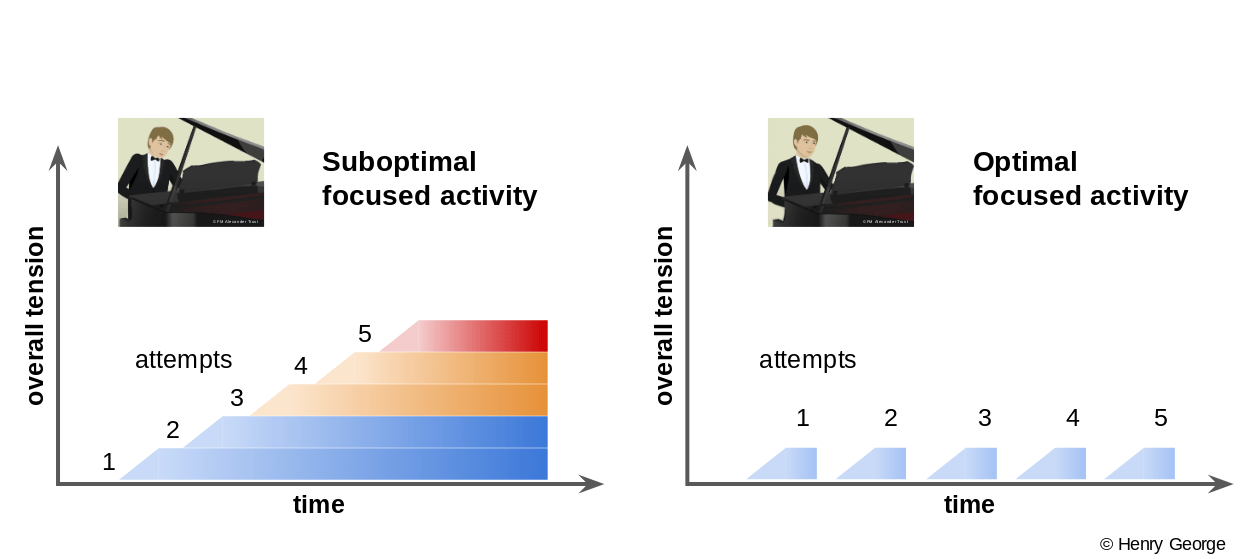Have you ever considered how muscle tension can accumulate over time: what you might call ‘compound tension’? Here’s a recent chart I created to express the idea:

Here are some interesting points to note:
- unnecessary muscle tension often occurs during focused activity. When our attention narrows down on something, so does our overall posture.
- unnecessary tension can ‘layer up’ (as expressed on the left) until it reaches a critical level where we experience discomfort or pain.
- we can prevent the build-up of unnecessary tension by taking breaks (as expressed on the right). In the Alexander Technique, this is termed ‘inhibition’, or pausing to prevent unnecessary patterns of tension.
- there are deliberately no scales on the chart. ‘Overall tension’ on the y-axis can accumulate in minutes, hours, days or years. And on the x-axis, an inhibitory pause could last seconds (for example, we could take a few moments to notice our breath, soften the eyes, reconnect with our support – sit bones and feet – and rebalance), or it could last much longer (such as when we lie down in a semi-supine position).
- in fact, over time, inhibition can transform into something continuous – a less reactive state where you’ve become skilled at preventing tension from interfering in your overall coordination. In other words, you can become more in tune with the interplay between yourself as a well-coordinated whole and the activity itself. You become less likely to ‘lose’ yourself in the intensity, frustration or all-consuming nature of a task – and so less likely to subject yourself to ‘cumulative tension’. This is the Alexander Technique in action.

